Autonomous camera traps for insects provide a tool for long-term remote monitoring of insects. These systems bring together cameras, computer vision, and autonomous infrastructure such as solar panels, mini computers, and data telemetry to collect images of insects.
With increasing recognition of the importance of insects as the dominant component of almost all ecosystems, there are growing concerns that insect biodiversity has declined globally, with serious consequences for the ecosystem services on which we all depend.
Automated camera traps for insects offer one of the best practical and cost-effective solutions for more standardised monitoring of insects across the globe. However, to realise this we need interdisciplinary teams who can work together to develop the hardware systems, AI components, metadata standards, data analysis, and much more.
This WILDLABS group has been set up by people from around the world who have individually been tackling parts of this challenge and who believe we can do more by working together.
We hope you will become part of this group where we share our knowledge and expertise to advance this technology.
Check out Tom's Variety Hour talk for an introduction to this group.
Learn about Autonomous Camera Traps for Insects by checking out recordings of our webinar series:
- Hardware design of camera traps for moth monitoring
- Assessing the effectiveness of these autonomous systems in real-world settings, and comparing results with traditional monitoring methods
- Designing machine learning tools to process camera trap data automatically
- Developing automated camera systems for monitoring pollinators
- India-focused projects on insect monitoring
Meet the rest of the group and introduce yourself on our welcome thread - https://www.wildlabs.net/discussion/welcome-autonomous-camera-traps-insects-group
Group curators
- @tom_august
- | he/him
Computational ecologist with interests in computer vision, citizen science, open science, drones, acoustics, data viz, software engineering, public engagement



- 4 Resources
- 48 Discussions
- 5 Groups



- 7 Resources
- 2 Discussions
- 5 Groups
- @Alino
- | Alain
I am a zoologist and I am interested in biodiversity and the conservation of insects and mammals
- 0 Resources
- 0 Discussions
- 3 Groups
Dr JOhn Read is founder and CEO of Conservation Innovation company Thylation, and founder and director of several adaptive management conservation projects . www.ecologicalhorizons.com, www.thylation.com, www.johnlread.com
- 0 Resources
- 0 Discussions
- 4 Groups
Luxembourg Institute of Science and Technology
Undertake and develop biodiversity monitoring

- 0 Resources
- 10 Discussions
- 4 Groups
DIY electronics for behavioral field biology



- 1 Resources
- 49 Discussions
- 4 Groups

- 0 Resources
- 5 Discussions
- 3 Groups
Aarhus University
Biologist and Research Technician working with ecosystem monitoring and research at Zackenberg Research Station in Greenland





- 12 Resources
- 215 Discussions
- 7 Groups
- @HRees
- | Him/His
WILDLABS - Programme Development Manager, keen interest in bats, hyaenas and tech!



- 5 Resources
- 2 Discussions
- 4 Groups
- 0 Resources
- 0 Discussions
- 7 Groups
- @TaliaSpeaker
- | She/her
WILDLABS & World Wide Fund for Nature/ World Wildlife Fund (WWF)
I'm the WILDLABS Research Specialist at WWF-US



- 12 Resources
- 54 Discussions
- 24 Groups
Ocean Science Analytics
Marine mammal ecologist and online technical trainer



- 1 Resources
- 29 Discussions
- 6 Groups
Worked as a mechanical engineer for a defence co, then software engineer, then for a research lab specialising in underwater robotics.



- 1 Resources
- 135 Discussions
- 16 Groups
I've been working in IT for the past four years and Cybersecurity for the past year and a half. I'm looking to leverage my technical skills towards conservation purposes. I'm new on this journey and excited to jump of volunteer activities where I'm able!
- 0 Resources
- 0 Discussions
- 4 Groups
The Smithsonian National Zoo & Conservation Biology Institute is seeking a Postdoctoral Research Fellow to help us integrate movement data & camera trap data with global conservation policy.
22 April 2024
We invite applications for the third Computer Vision for Ecology (CV4E) workshop, a three-week hands-on intensive course in CV targeted at graduate students, postdocs, early faculty, and junior researchers in Ecology...
12 February 2024
The primary focus of the research is to explore how red deer movements, space use, habitat selection and foraging behaviour change during the wolf recolonization process.
10 February 2024
Outstanding chance for a motivated and ambitious individual to enhance their current project support skills by engaging with a diverse array of exciting projects in the field of biodiversity science.
11 December 2023
Two-year postdoc in AI and remote sensing for citizen-science pollinator monitoring, at Aarhus University. The successful candidate will integrate our computational entomologist team to develop and deploy novel methods...
4 December 2023
Join the NightLife team where you'll blend entomology expertise with technological innovation using automated insect monitoring.
25 October 2023
Article
We are a group of students at UW-Madison who have built a working prototype for insect imaging. The light trap is aimed at photographing aquatic insects.
18 September 2023
Apply for funding (£500,000-£750,000) to develop software systems, which will help to improve biodiversity monitoring by automating the analysis of images and videos
12 July 2023
Careers
Permanent and Full Time role at the UK Centre for Ecology & Hydrology
8 June 2023
The Department of Ecoscience, Aarhus University, invites applications for a postdoc position to strengthen our team on image recognition and deep learning in ecology. Specifically, the candidate will further develop...
9 May 2023
Postdoctoral position for 12 months initially, Cambridge University Agroecology Research Group.
6 April 2023
June 2024
event
February 2024
event
December 2023
event
| Description | Activity | Replies | Groups | Updated |
|---|---|---|---|---|
| Gotcha, well I look forward to seeing future iterations and following along with your progress!! |
|
Autonomous Camera Traps for Insects, AI for Conservation, Emerging Tech, Open Source Solutions | 5 days 8 hours ago | |
| More cool things surrounding the Mothbox project keep happening! Here’s a recap of cool developments over the past month!New Teammate! Bri... |
|
Autonomous Camera Traps for Insects | 6 days 17 hours ago | |
| Greetings Everyone, We are so excited to share details of our WILDLABS AWARDS project "Enhancing Pollinator Conservation through Deep... |
|
AI for Conservation, Autonomous Camera Traps for Insects | 2 weeks 3 days ago | |
| For our [mothbox project](https://forum.openhardware.science/c/projects/mothbox/73) we are programming pijuices and pis to automatically... |
|
Autonomous Camera Traps for Insects | 1 month 1 week ago | |
| Hi, I made a little utility script that folks here might find useful (or might have MUCH BETTER VERSIONS OF! and if so, let me know!) ... |
|
Autonomous Camera Traps for Insects | 1 month 3 weeks ago | |
| We did some more testing with the Mothbeam in the forest. It's the height of dry season right now, so not many moths came out, but the mothbeam shined super bright and attracted a... |
|
Autonomous Camera Traps for Insects | 2 months 1 week ago | |
| Hi Danilo, yes just in time ;-) |
|
Camera Traps, Autonomous Camera Traps for Insects | 2 months 3 weeks ago | |
| Yep, here:Currently it only installs on older Jetsons as in the coming weeks I’ll finish the install code for current jetsons.Technically speaking, if you were an IT specialist... |
|
Autonomous Camera Traps for Insects, Camera Traps | 3 months 1 week ago | |
| Great work! I very much look forward to trying out the MothBeam light. That's going to be a huge help in making moth monitoring more accessible.And well done digging into the... |
|
Autonomous Camera Traps for Insects | 3 months 1 week ago | |
| The preprint to our camera trap paper is now available at bioRxiv. |
+23
|
Autonomous Camera Traps for Insects | 4 months 2 weeks ago | |
| Thanks a lot for this detailed update on your project! It looks great! |
|
Autonomous Camera Traps for Insects | 5 months 4 weeks ago | |
| It depends on which scientists you talk to. I am an favor of just doing a timelapse and doing a post-processing sort afterwards. There's not much reason i can see for such motion... |
|
Autonomous Camera Traps for Insects | 5 months 4 weeks ago |
Postdoc: Biologging & Camera Trap Data Integration
22 April 2024 10:10pm
WILDLABS AWARDS 2024 – MothBox
15 April 2024 5:06am
19 April 2024 12:00pm
Yeah we got it about as bare bones as possible for this level of photo resolution and duration in the field. The main costs right now are:
Pi- $80
Pijuice -$75
Battery - $85
64mp Camera - $60
which lands us at $300 already. But we might be able to eliminate that pijuice and have fewer moving parts, and cut 1/4 of our costs! Compared to something like just a single logitech brio camera that sells for $200 and only gets us like 16mp, we are able to make this thing as cheap as we could figure out! :)

19 April 2024 12:54pm
Gotcha, well I look forward to seeing future iterations and following along with your progress!!
Mothbox v3.2 Updates - Solar, HDR, Wifi Hotspots, and More!
18 April 2024 4:58am
WILDLABS AWARDS 2024 - Enhancing Pollinator Conservation through Deep NeuralNetwork Development
7 April 2024 5:55pm
Useful Script to easily program the Pijuice and Schedule Raspberry Pi happenings
17 March 2024 3:10am
Useful Pi Script for Backing Up
1 March 2024 6:34pm
Mothbox + Mothbeam Update: 4
31 January 2024 7:09pm
15 February 2024 4:49pm
We did some more testing with the Mothbeam in the forest. It's the height of dry season right now, so not many moths came out, but the mothbeam shined super bright and attracted a whole bunch of really tiny things that swarmed a lot


and some nocturnal bees

you could also see the mothbeam's aura from far away in the forest! so that was impressive!

I also tested out attaching a 12V USB booster cable to the Mothbeam, and it works
nice! So you can attach regular USB 5V battery packs to the mothbeam as well!
Computer Vision for Ecology Workshop 2025 Call for Applications
12 February 2024 9:29pm
Post-doc possition - Field spanning movement ecology, ecology of fear, bio-logging science, behavioral ecology, and ecological statistics
10 February 2024 7:20am
Underwater camera trap - call for early users
13 December 2023 11:44pm
23 January 2024 1:21pm
Many thanks for your contribution to the survey! We are now summarizing the list of early users and making our best to propose a newtcam to all in due time.
All the best!
Xavier
30 January 2024 10:20pm
Is there still time to apply?
31 January 2024 12:12pm
Hi Danilo, yes just in time ;-)
Computational Entomology Webinar II: Automated Pollinator Monitoring
23 January 2024 12:44pm
1st Joint International Scientific Conference
23 January 2024 8:34am
Testing Raspberry Pi cameras: Results
5 May 2023 5:11pm
5 September 2023 8:16am
And finally for now, the object detectors are wrapped by a python websocket network wrapper to make it easy for the system to use different types of object detectors. Usually, it's about 1/2 a day for me to write a new python wrapper for a new object detector type. You just need to wrap in the network connection and make it conform to the yolo way of expressing the hits, i.e. the json format that yolo outputs with bounding boxes, class names and confidence level.
What's more, you can even use multiple object detector models in different parts of a single captured image and you can cascade the logic to require multiple object detectors to match for example, or a choice from different object detectors.
It's the perfect anti-poaching system (If I say so myself :) )
10 January 2024 11:47pm
Hey @kimhendrikse , thanks for all these details. I just caught up. I like your approach of supporting multiple object detectors and using the python websockets wrapper! Is your code available somewhere?
11 January 2024 6:02am
Yep, here:
Currently it only installs on older Jetsons as in the coming weeks I’ll finish the install code for current jetsons.
Technically speaking, if you were an IT specialist you could even make it work in wsl2 Ubuntu on windows, but I haven’t published instructions for that. If you were even more of a specialist you wouldn’t need wsl2 either. One day I’ll publish instructions for that once I’ve done it. Though it would be slow unless the windows machine had an NVidia GPU and you PyTorch work with it.
Update 3: Cheap Automated Mothbox
31 December 2023 9:37pm
1 January 2024 9:18pm
This looks amazing! I'm currently work with hastatus bats up in Bocas, it would be really interesting to utilize some of these near foraging sites. Be sure to post again when you post the final documentation on github!
Also, Gamboa......dang I miss that little slice of heaven...
Super cool work Andrew!
Best,
Travis
5 January 2024 8:56pm
Thanks!!!
10 January 2024 11:33pm
Great work! I very much look forward to trying out the MothBeam light. That's going to be a huge help in making moth monitoring more accessible.
And well done digging into the picamera2 library to reduce the amount of time the light needs to be on while taking a photo. That is a super annoying issue!
Project support officer - Conservation Tech
11 December 2023 10:24pm
Project introductions and updates
2 August 2022 11:21am
29 March 2023 6:05pm
Hi all! I'm part of a Pollinator Monitoring Program at California State University, San Marcos which was started by a colleague lecturer of mine who was interested in learning more about the efficacy of pollinator gardens. It grew to include comparing local natural habitat of the Coastal Sage Scrub and I was initially brought on board to assist with data analysis, data management, etc. We then pivoted to the idea of using camera traps and AI for insect detection in place of the in-person monitoring approach (for increasing data and adding a cool tech angle to the effort, given it is of interest to local community partners that have pollinator gardens).
The group heavily involves students as researchers, and they are instrumental to the projects. We have settled on a combination of video footage and development of deep neural networks using the cloud-hosted video track detection tool, VIAME (developed by Kitware for NOAA Fisheries originally for fish track detection). Students built our first two PICTs (low-cost camera traps), and annotated the data from our pilot study that we are currently starting the process of network development for. Here's a cool pic of the easy-to-use interface that students use when annotating data:
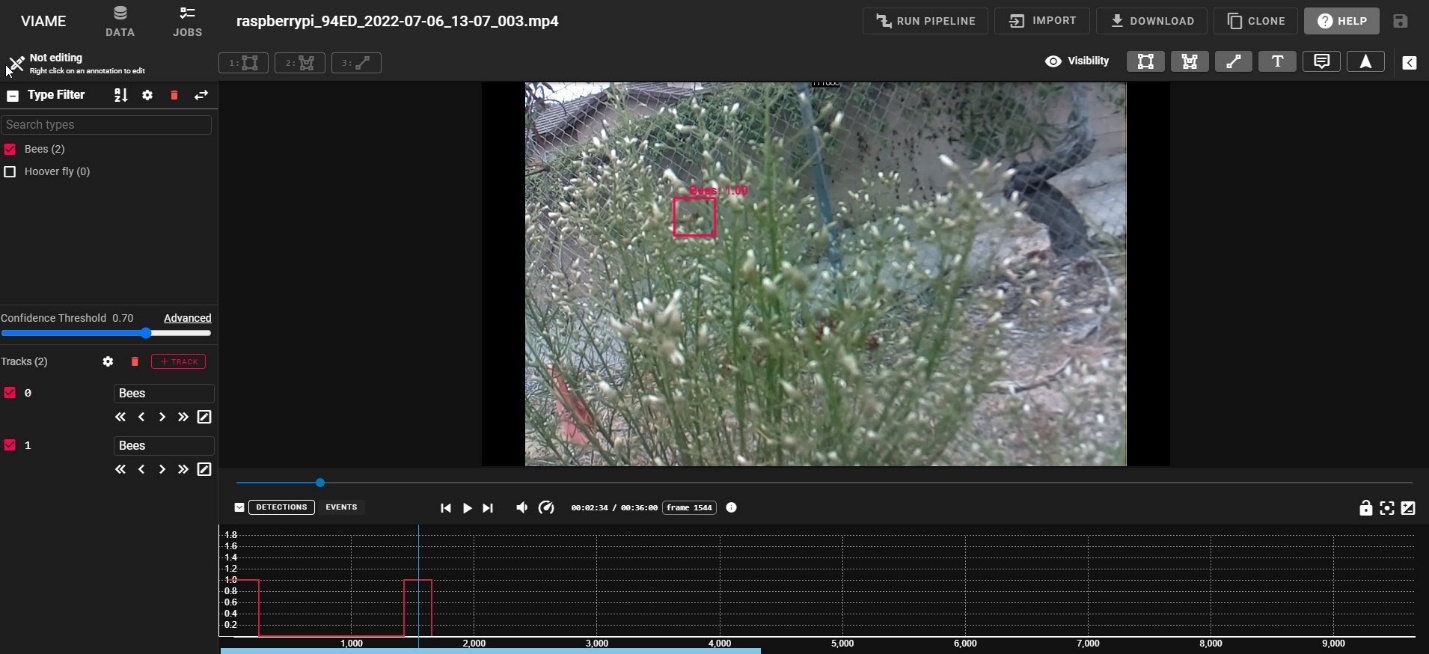
Figure 1: VIAME software demonstrating annotation of the track of an insect in the video (red box). Annotations are done manually to develop a neural network for the automated processing.
The goal of the group's camera trap team is develop a neural network that can track insect pollinators associated with a wide variety of plants, and to use this information to collect large datasets to better understand the pollinator occurrence and activities with local habitats. This ultimately relates to native habitat health and can be used for long-term tracking of changes in the ecosystem, with the idea that knowledge of pollinators may inform resources and conservation managers, as well as local organizations in their land use practices. We ultimately are interested in working with the Kitware folks further to not only develop a robust network (and share broadly of course!), but also to customize the data extraction from automated tracks to include automated species/species group identification and information on interaction rate by those pollinators. We would love any suggestions for appropriate proposals to apply to, as well as any information/suggestions regarding the PICT camera or suggestions on methods. We are looking to include night time data collection at some point as well and are aware the near infrared is advised, but would appreciate any thoughts/advice on that avenue as well.
We will of course post when we have more results and look forward to hearing more about all the interesting projects happening in this space!
Cheers,
Liz Ferguson
5 April 2023 10:00pm
HI, indeed as Tom mentioned, I am working here in Vermont on moth monitoring using machines with Tom and others. We have a network going from here into Canada with others. Would love to catch up with you soon. I am away until late April, but would love to connect after that!
10 December 2023 5:10pm
The preprint to our camera trap paper is now available at bioRxiv.
Two-year postdoc in AI and remote sensing for citizen-science pollinator monitoring
4 December 2023 12:21pm
AWMS Conference 2023
Update 2: Cheap Automated Mothbox
23 October 2023 8:32pm
24 October 2023 9:05am
Hi Andrew,
thanks for sharing your development process so openly, that's really cool and boosts creative thinking also for the readers! :)
Regarding a solution for Raspberry Pi power management: we are using the PiJuice Zero pHAT in combination with a Raspberry Pi Zero 2 W in our insect camera trap. There are also other versions available, e.g. for RPi 4 (more info: PiJuice GitHub). From my experience the PiJuice works mostly great and is super easy to install and set up. Downsides are the price and the lack of further software updates/development. It would be really interesting if you could compare one of their HATs to the products from Waveshare. Another possible solution would be a product from UUGear. I have the Witty Pi 4 L3V7 lying around, but couldn't really test and compare it to the PiJuice HAT yet.
Is there a reason why you are using the Raspberry Pi 4? From what I understand about your use case, the RPi Zero 2 W or even RPi Zero should give enough computing power and require a lot less power. Also they are smaller and would be easier to integrate in your box (and generate less heat).
I'm excited for the next updates to see in which direction you will be moving forward with your Mothbox!
Best,
Max
25 October 2023 6:21pm
Thanks for these tips!
We are using a RPI4 because the people I am building it for want images from the 64MP camera from Arducam and so we have to use that to make that work.
27 October 2023 6:44am
Thanks a lot for this detailed update on your project! It looks great!
Entomological Research Specialist for Automated Insect Monitoring
25 October 2023 7:21pm
Cheap Automated Mothbox
31 August 2023 10:19pm
25 October 2023 5:04pm
I'm looking into writing a sketch for the esp32-cam that can detect pixel changes and take a photo, wish me luck.
25 October 2023 5:11pm
One question, does it even need motion detection? What about taking a photo every 5 seconds and sorting the photos afterwards?
25 October 2023 6:23pm
It depends on which scientists you talk to. I am an favor of just doing a timelapse and doing a post-processing sort afterwards. There's not much reason i can see for such motion fidelity. For the box i am making we are doing exactly that, though maybe a photo every minute or so
Metadata standards for Automated Insect Camera Traps
24 November 2022 9:49am
2 December 2022 3:58pm
Yes. I think this is really the way to go!
6 July 2023 4:48am
Here is another metadata initiative to be aware of. OGC has been developing a standard for describing training datasets for AI/ML image recognition and labeling. The review phase is over and it will become a new standard in the next few weeks. We should consider its adoption when we develop our own training image collections.
24 October 2023 9:12am
For anyone interested: the GBIF guide Best Practices for Managing and Publishing Camera Trap Data is still open for review and feedback until next week. More info can be found in their news post.
Best,
Max
Automated moth monitoring & you!
24 October 2023 8:52am
Catch up with The Variety Hour: October 2023
19 October 2023 11:59am
Q&A: UK NERC £3.6m AI (image) for Biodiversity Funding Call - ask your questions here
13 September 2023 4:10pm
21 September 2023 4:27pm
This is super cool! Me and @Hubertszcz and @briannajohns and several others are all working towards some big biodiversity monitoring projects for a large conservation project here in panama. The conservation project is happening already, but hubert starts on the ground work in January and im working on a V3 of our open source automated insect monitoring box to have ready for him by then.
I guess my main question would be if this funding call is appropriate/interested for this type of project? and what types of assistance are possible through this type of funding (researchers? design time? materials? laboratory field construction)
Wisconsin - Insect Light Trap
18 September 2023 5:34am
Best Material for Moth Lighting?
9 September 2023 1:46am
9 September 2023 5:22am
Plasticy substances like polyester can be slippery, so I imagine that's why cotton is most often used. White is good for color correction, while still reflecting light pretty well. When I've had the option I've chosen high thread count cotton sheets, so the background is smoothest and even the tiniest arthropods are on a flat background, not within contours of threads. Main problem with cotton is mildew and discoloration.
That being said, I haven't actually done proper tests with different materials. Maybe a little side project once standardized light traps are a thing?
Improving the generalization capability of YOLOv5 on remote sensed insect trap images with data augmentation
31 August 2023 8:29am
Interesting new methods to help improve insect detection
"...this paper proposes three previously unused data augmentation approaches (gamma correction, bilateral filtering, and bit-plate slicing) which artificially enrich the training..."
360 Camera for Marine Monitoring
25 July 2023 8:54am
28 July 2023 7:43pm
Hi Sol,
For my research on fish, I had to put together a low-cost camera that could record video for several weeks. Here is the design I came up with
At the time of the paper, I was able to record video for ~12 hours a day at 10 fps and for up to 14 days. With new SD cards now, it is pushed to 21 days. It costs about 600 USD if you build it yourself. If you don't want to make it yourself, there is a company selling it now, but it is much more expensive. The FOV is 110 degrees, so not the 360 that you need, but I think there are ways to make it work (e.g. with the servo motor).
Happy to chat if you decide to go this route and/or want to brainstorm ideas.
Cheers,
Xavier
3 August 2023 2:32am
Hi Xavier, this is fantastic! Thanks for sharing, the time frame is really impressive and really in line with what we're looking for. I'll send you a message.
Cheers,
Sol
3 August 2023 3:19am
I agree, this would be great for canopy work!
European Forum Alpbach
1 August 2023 5:23pm


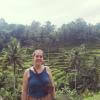




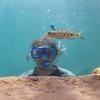


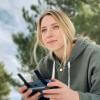









































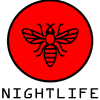









18 April 2024 10:39am
Already an update from @hikinghack: